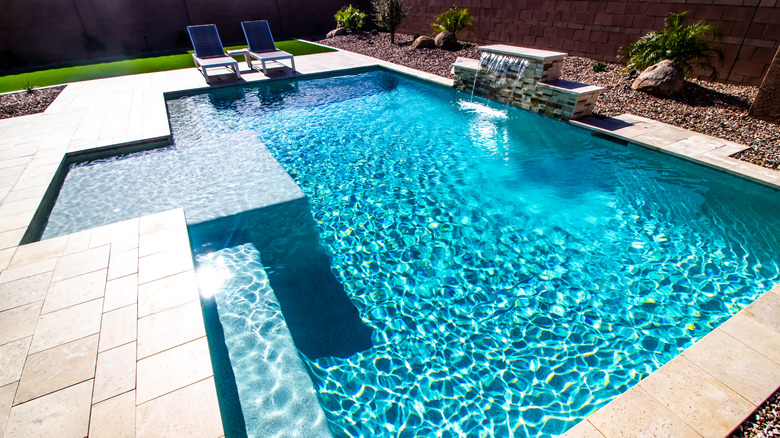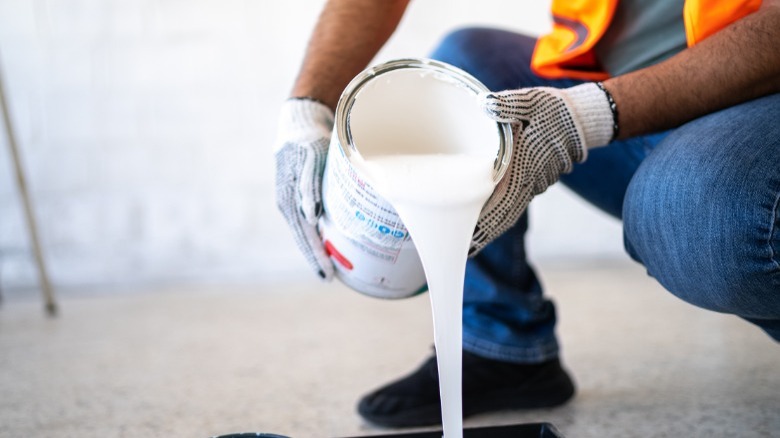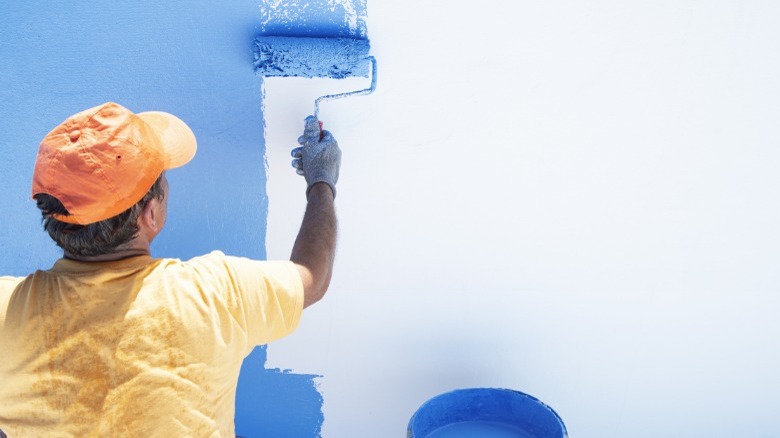How To Choose The Right Paint For Your Pool
For many of us, summer has already begun, and that means it's pool time! Maybe you're designing your first pool, or perhaps you want to refurbish your longtime one for the new season. In either situation, choosing the right paint is an absolute must. Not just for aesthetic purposes, but for practicality and stability. You don't want to spend a ton of time and money painting your pool just for the color to fade shortly after. On average, painting a 300-square-foot pool will cost anywhere between $500 and $800, so unless you want to budget for this pool project each year, you'll want to choose the correct paint for your pool the first time around.
Now, when it comes time to pick your paint, you have to take into consideration how often you use your pool, and how much maintenance you're willing to put into it. There are three types of paint used to cover the surface of a pool: acrylic, epoxy, and rubberized. It's important to understand the benefits of each option, as well as the potential downsides.
The differences between acrylic, epoxy, and rubberized paint
If you know anything about pools (or have one yourself), you probably know the two most common paint choices are acrylic and epoxy. Acrylic is recommended because it dries faster than any other type on the market. However, the biggest issue with acrylic paint for pools is it doesn't last very long. At most, you'll get a good two seasons out of it. Epoxy, on the other hand, holds up seven to eight years, and is much more durable than its counterpart.
Rubberized pool paint is much thicker than the other two, and is made from liquified oil, latex, or rubber. Because it's so thick, you don't need to apply more than one thin coat to your pool. This type of paint is a practical option for untouched surfaces, but can also be used over painted pool surfaces as well; that is, unless those surfaces were originally touched with either epoxy or acrylic paint.
Rubberized paint also doesn't work with fiberglass surfaces or pools lined with vinyl. This said, the pool paint is unmatched when it comes to durability, so you won't need to worry about your pool's color fading away after a severe storm.
How to prep your pool for paint
Once you've chosen the right paint for your pool, it's time to prepare for painting. The first step is to scrape off any old paint or residue. Obviously, if this is your first time painting your pool, you can go ahead and skip this step. If you notice any cracks, make sure to fill those in with mixed polyester putty before you continue. Following that, you'll want to give the surface a nice acid wash in order to roughen it up. Doing so removes stains and gives the paint a much brighter finish.
You'll want to rinse the pool to get rid of any remaining acid or TSP — a cleaning agent that contains harmful chemicals and can damage the skin. Get rid of any remaining water so the pool can fully dry, which could take about three to five days. Finally, protect the lights, tiles, and other fittings using painter's tape. After you've completed this last step of preparation, your pool is officially ready for painting.


